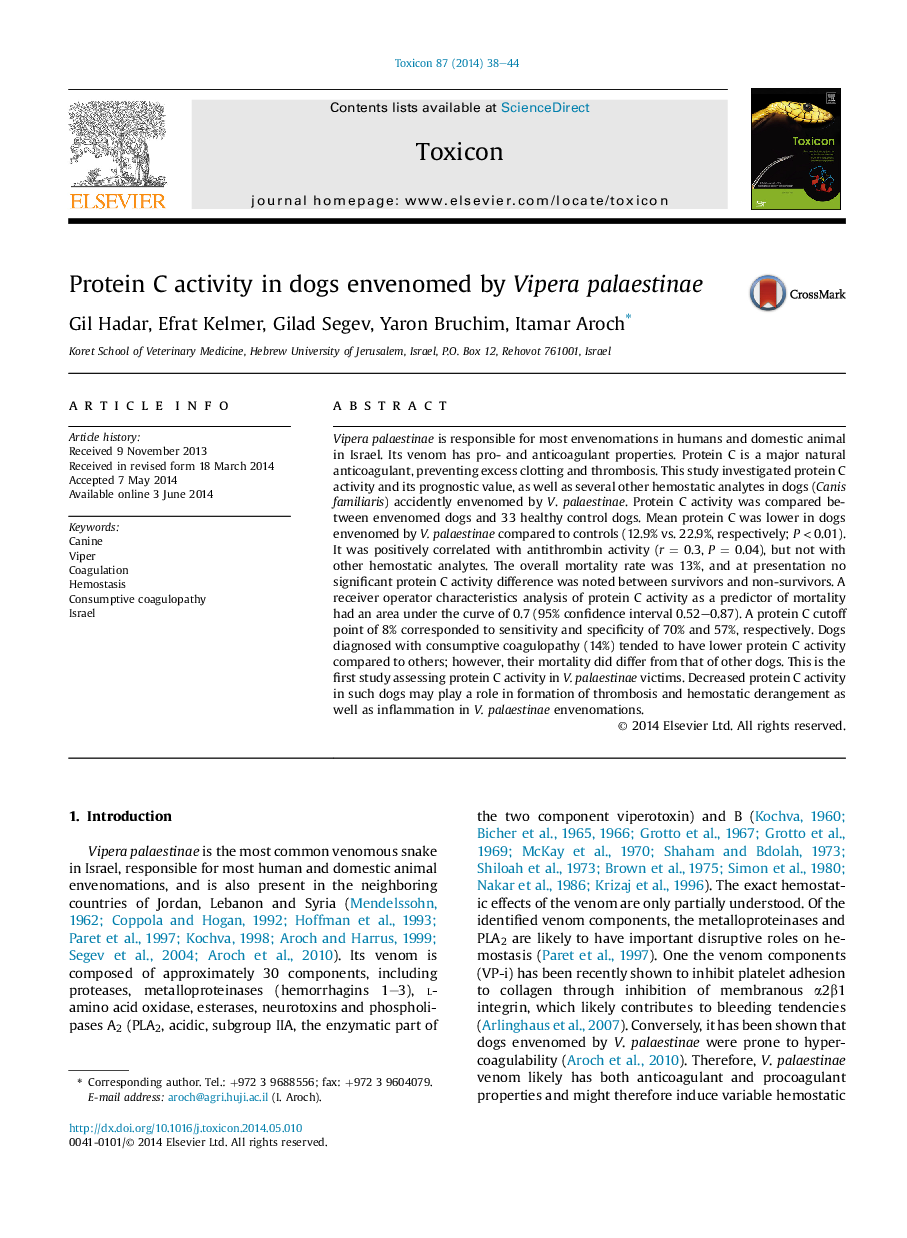| کد مقاله | کد نشریه | سال انتشار | مقاله انگلیسی | نسخه تمام متن |
|---|---|---|---|---|
| 2064607 | 1544148 | 2014 | 7 صفحه PDF | دانلود رایگان |

• Protein C activity is decreased in dogs envenomed by V. palaestinae.
• Protein C activity is positively correlated with antithrombin activity in V. palaestinae-envenomed dogs.
• Protein C activity did not differ between surviving and non-surviving V. palaestinae-envenomed dogs.
• Protein C activity tends to be decreased in V. palaestinae-envenomed dogs with consumptive coagulopathy.
Vipera palaestinae is responsible for most envenomations in humans and domestic animal in Israel. Its venom has pro- and anticoagulant properties. Protein C is a major natural anticoagulant, preventing excess clotting and thrombosis. This study investigated protein C activity and its prognostic value, as well as several other hemostatic analytes in dogs (Canis familiaris) accidently envenomed by V. palaestinae. Protein C activity was compared between envenomed dogs and 33 healthy control dogs. Mean protein C was lower in dogs envenomed by V. palaestinae compared to controls (12.9% vs. 22.9%, respectively; P < 0.01). It was positively correlated with antithrombin activity (r = 0.3, P = 0.04), but not with other hemostatic analytes. The overall mortality rate was 13%, and at presentation no significant protein C activity difference was noted between survivors and non-survivors. A receiver operator characteristics analysis of protein C activity as a predictor of mortality had an area under the curve of 0.7 (95% confidence interval 0.52–0.87). A protein C cutoff point of 8% corresponded to sensitivity and specificity of 70% and 57%, respectively. Dogs diagnosed with consumptive coagulopathy (14%) tended to have lower protein C activity compared to others; however, their mortality did differ from that of other dogs. This is the first study assessing protein C activity in V. palaestinae victims. Decreased protein C activity in such dogs may play a role in formation of thrombosis and hemostatic derangement as well as inflammation in V. palaestinae envenomations.
Journal: Toxicon - Volume 87, 1 September 2014, Pages 38–44